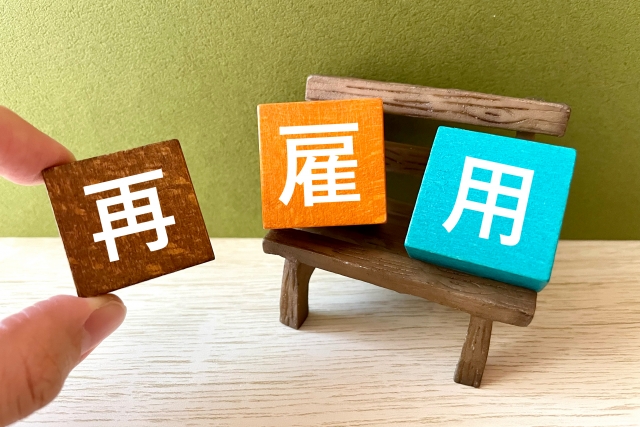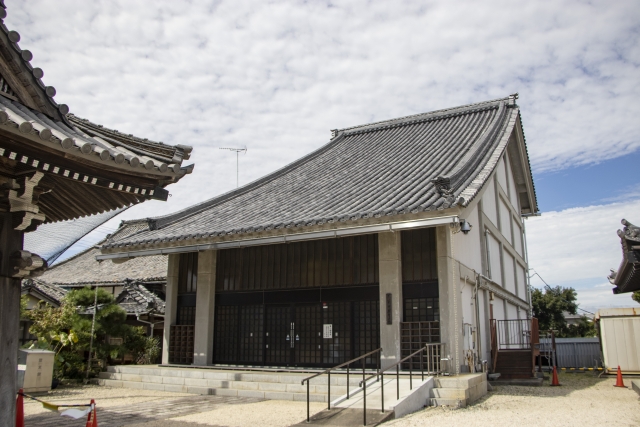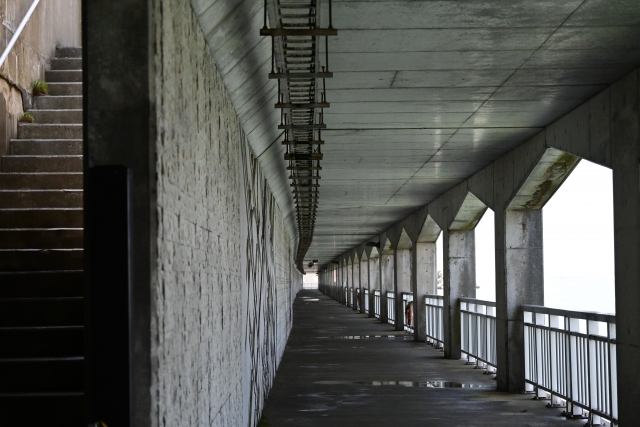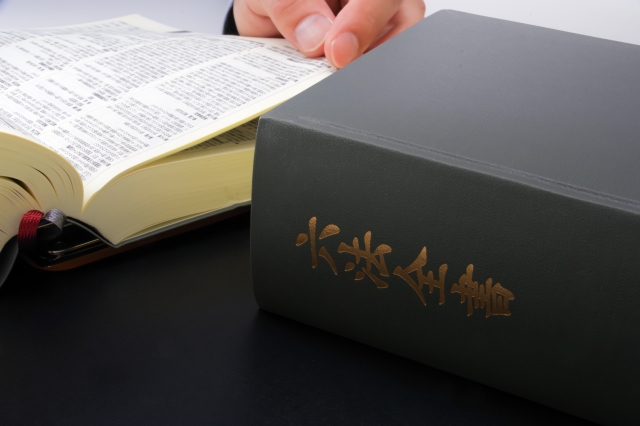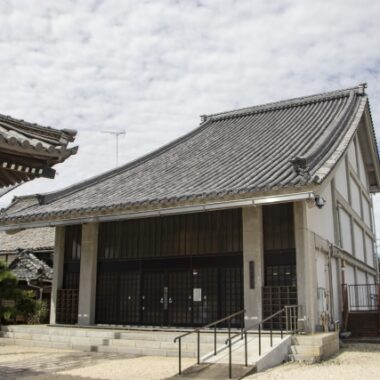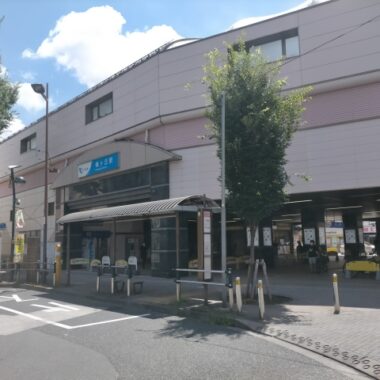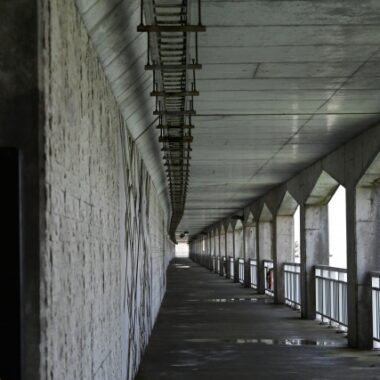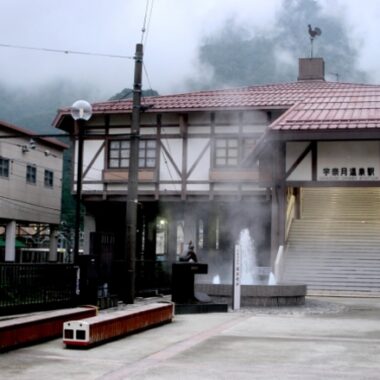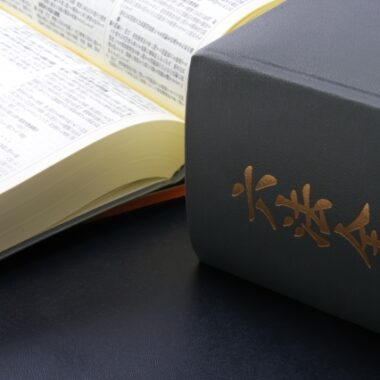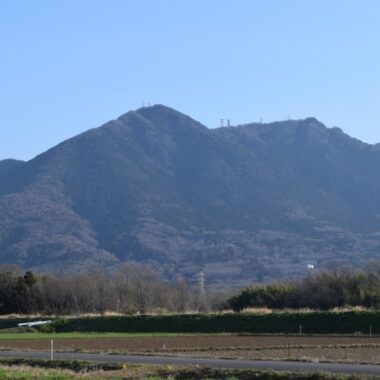The Law Concerning the Relief of Pollution specifies the relief methods and the objects to be relieved. In addition, the region to be relieved may be identified. The concrete contents of these remedies are often delegated to the laws and regulations under the Ministerial Ordinance.
Looking at Minamata Disease, which is a typical pollution, the Act on Special Measures Concerning the Relief of Health Damage Relief from Pollution (hereinafter referred to as the Relief Act), which was enacted in December 1969, is the law applied for the relief of victims of Minamata Disease. In addition to Minamata disease, the Relief Law was also targeted at other pollution damages such as Itai-itai disease and Yokkaichi asthma. In June 1973, the Law Concerning Compensation for Pollution-Relief Health Damage (hereinafter referred to as the “Public Health Law”) was enacted and abolished (enforced in September 1974). In addition, the Act on Special Measures Concerning the Relief of Victims of Minamata Disease and the Solution of the Minamata Disease Issue (hereinafter referred to as “Special Litigation”) was enacted in July 2009, and was promulgated and enforced in the same month.
This section will discuss the public health law and special lawsuits that have recently been a problem in lawsuits.
First of all, we will examine the difference between the Public Health Law and the object of remedies in special lawsuits.
The remedy for Minamata Disease Pollution Victims under the Public Health Law provides compensation benefits such as medical care and disability compensation for those suffering from Minamata Disease. In accordance with the Ordinance for Enforcement of the Public Health Law, the districts of Minamata City and Ashiki District in Kumamoto Prefecture and the district of Izumi City in Kagoshima Prefecture are designated as the “Class II districts” under Article 2, Paragraph 2 of the Public Health Law. Those who had addresses for a certain period of time during the period when water pollution occurred (as stipulated in Items 1 to 3 of Article 4, Paragraph 2 of the Public Health Law) are designated as diseases caused by substances causing water pollution (Minamata Disease under the Ordinance for Enforcement of the Public Health Law).In response to an application from a person who is deemed to be affected, the prefectural governor recognizes the applicability, and then pays compensation to that person. In other words, compensation benefits will be provided to those who have suffered from Minamata Disease among those who lived in a certain area of Minamata Disease pollution for a certain period of time at the time of Minamata Disease Pollution. The Ministry of the Environment’s Health Department Director’s Notice issued on July 1, 1977 states the criteria for recognizing whether the patient is suffering from Minamata disease. This is generally referred to as the “52-year judgment condition.” Since this notice, the 52-year judgment condition has been adopted for the approval under the Public Health Law.
On the other hand, according to Article 5, paragraphs 1 and 2 of the Special Measures Law, the relief of victims of Minamata Disease Pollution is to be carried out by taking relief measures such as (1) exposure to certain methylmercury, and (2) payment of lump-sum payments, medical treatment allowances, and medical treatment allowances (lump-sum payments may not be paid, and only medical treatment expenses may be paid) to those who have certain symptoms such as those who have sensory disturbances in the peripheral extremities and those who have sensory disturbances in the peripheral extremities or those who have sensory disturbances in the peripheral extremities. According to the interpretation of the text of the Article 5 of the Special Measures Law, those who were exposed to methylmercury who had certain symptoms, who had suffered certain damage due to Minamata Disease pollution due to their residence in the area affected by Minamata Disease pollution, and who were more extensive than the group of patients with Minamata Disease. In lawsuits, Chisso, the company responsible for Minamata Disease Pollution, asserts that the Act on Special Measures is the object of remedy as a “victim of Minamata Disease” in order to terminate conflicts in the region and finally resolve the Minamata Disease problem for those who are not recognized as patients with Minamata Disease under the Public Health Law. However, if methylmercury poisoning is referred to as Minamata Disease, as it is originally defined, many of the “victims of Minamata Disease” mentioned by Chisso are considered to be patients with Minamata Disease because of the slight severity of the symptoms of poisoning. Although many patients with Minamata disease in this sense have the symptoms of (2) above, it cannot be said that all patients with Minamata disease have the symptoms of (2) above. In this sense, patients with Minamata disease have a wide range of symptoms, ranging from mild to severe, and there is no established screening standard for “Minamata disease” to the extent that all patients with severe Minamata disease fulfill the symptoms of (2) (for this reason, even more than half a century after Minamata disease pollution, the statue of Minamata disease is disputed in the court, and the state’s assertion may be denied in the trial). Not all patients with Minamata disease who have methylmercury poisoning have the symptoms of (2).
Therefore, it can be said that logically, some patients with Minamata disease do not satisfy the condition (2) and cannot be subject to the Act on Special Measures, and even if they prove that they suffer from Minamata disease, they cannot be required to be approved under the Act on Special Measures. The conditions for recognition under the Special Measures Law are (1) and (2). Therefore, in lawsuits requiring special measures, the subject matter of proof is applicable to (1) and (2) and is not applicable to Minamata disease.
Next, let’s look at the framework of the decision-making of compulsory lawsuits.
In the Supreme Court decision of April 16, 2013, which is a lawsuit requiring the public health law (hereinafter referred to as “Mr. F’s lawsuit” in the case from the court of first instance to the Supreme Court of the same decision),
The court’s hearing and judgment on the appropriateness of the judgment of the administrative agency for disposition should not be conducted from the viewpoint of whether or not there are unreasonable points in the judgment conditions of 1977, which were regarded as the criteria for judgment of the administrative agency for disposition, in light of the current medical standards, as stated in the judgment of the original instance court. “It is reasonable to understand that the court should specifically judge whether or not the applicant suffered from Minamata Disease.
It is shown. The judgment of the Supreme Court is considered to have been heard and judged in accordance with the “Judgement Replacement Type Examination in which the Court makes its own judgment from the same standpoint as the administrative agency for disposition and replaces it with the judgment of the administrative agency” (“Civil Affairs Title of the Case of the Supreme Court (FY2013)” (p.241). In other words, the applicant decides whether the applicant suffers from Minamata Disease independently without being caught by the criteria of the applicant prefecture. Thus, in the Supreme Court decision framework of Mr. F’s lawsuit, the plaintiff’s susceptibility to Minamata disease is proved in the court. On the other hand, in cases where compensation for damage to Minamata Disease is sought in a lawsuit for compensation for damages, the main proof of the causal relationship of the lawsuit for compensation for damage is the morbidity of Minamata Disease (apart from proof of damage), so if a person who has not been granted an application under the Public Health Law tries to recover from damage through lawsuits, the most important issue and the most important proof subject are not different from the morbidity of Minamata Disease, regardless of whether the lawsuit for compensation for damages is compulsory or the lawsuit for compensation for damages is chosen.
On the other hand, the persons subject to remedy under the Special Measures Law are “Minamata Disease Victims” (not Minamata Disease Patients) who have symptoms specified by the Special Measures Law, not Minamata Disease Patients. Therefore, if a person who has not been granted an application under the Special Measures Law takes action as a victim recovery, it is considered that the proof subject of the compulsory action is not the susceptibility to Minamata Disease, but the subject of the proof of the compulsory action is not the problem of the above-mentioned (1) and (2), and it is different from the susceptibility to Minamata Disease which is the subject of proof if the action for compensation for damages is selected. It is, of course, possible to claim that patients with Minamata disease who do not meet the requirements of (1) and (2) under the Special Measures Act are also subject to remedy from the legislative background, but it is also considered that the scope of the subject of remedy under the Special Measures Act is substantially expanded by trial, and it is considered that it is quite difficult for the court to recognize such claim.
Incidentally, in the appeal trial for Mr. F’s suit, the examination was conducted from the viewpoint of “whether or not there are unreasonable points in the judgment conditions that are unreasonable in light of the current medical standards….
While the public health law relief targets all patients with Minamata disease who existed objectively as social facts before the legislative remedy of “patients with Minamata disease” as described above, the Special Measures Law relieves a specific group of victims newly stipulated by the legislative remedy of “victims of Minamata disease” with specific symptoms. In view of this, the legislative clarification of the criterion for judgment when a lawsuit requiring special measures is instituted suggests that (a) there was an error in screening, (b) there was an error in the recognition of the applicability, which is the criterion of the Law Concerning Special Measures Concerning the Results of Screening, (1) and (2) there was an error in the recognition of the applicability. In principle, what kind of symptom is abstractly the object of remedy under the Law Concerning Special Measures does not matter. Mr. F’s appeal court of the last resort stated that as the reason for adopting the judgment substitution type examination, the public health law states that “the recognition itself is an act of confirming the present or past fixed objective fact that Minamata Disease has been suffered as an objective event, and the judgment of the administrative agency of the disposition on this point should not be left to its discretion.” However, the relief target under the Special Measures Law is not defined by the appropriateness of pollution diseases that exist as objective events as described above, but is determined by the appropriateness of the requirements stipulated in the legislation. Therefore, according to the judgment framework of Mr. F’s suit, it is unlikely that the judgment substitutional examination will be adopted in the judgment under the Special Measures Law. In addition, the above-mentioned page of the Supreme Court case explanation also states that “the discretion of the administrative agency for disposition pertaining to the fulfillment of the requirements for disposition, i.e., whether or not the discretion for disposition can be accepted, has been denied, but the Supreme Court case and the Supreme Court case affirm this,” and as cited in the Supreme Court judgment of October 4, 1978, the Court is considered to have accepted the discretion for the requirements. As a result, as mentioned above, the requirements for disposition under the Relief Act (1) and (2) above) are problematic in lawsuits requiring special measures, and therefore, it is highly likely that the lawsuit will be subject to a discretionary examination.
In the first instance of Mr. F’s suit, the court of first instance decided on the request for rescission: “2. The ruling to dismiss the plaintiff’s application for the recognition of Minamata disease filed by the Kumamoto Prefectural Governor against the plaintiff on May 2, 1980, shall be rescinded.” On the request for obligation, “3. The Kumamoto Prefectural Governor shall, based on Article 4, Paragraph 2 of the Act on Compensation for Pollution-Related Health Damage, grant the plaintiff a ruling that the disease to which the plaintiff is suffering is Minamata disease due to the pollution of the water quality of the districts of Minamata City and Ashikita County, among the districts of Kumamoto Prefecture, and Kagoshima Prefecture.” In the first instance, the reason for the judgment stated that “Minamata disease” under the Public Health Law should be interpreted as a nervous system disease caused by the oral ingestion of methylmercury accumulated in fish and shellfish.” In order to be recognized as suffering from Minamata disease, it is necessary to comprehensively examine all evidence in light of empirical rules and to prove that the applicant has suffered from Minamata disease, and the judgment should be made that the applicant should have confidence in the truth to the extent that the applicant is not suspected. The plaintiff’s claim is accepted by the framework similar to that of the appellant’s appeal court. However, the appeals court of the second instance decided to dismiss the plaintiff’s request by rejecting the appellee’s request for cancellation of the application for the recognition of Minamata Disease. This difference can also be attributed to the difference between the decision framework and the evidence based on it.
We will also consider the framework for judging the causality of claims for damages.
The Supreme Court ruling on October 15, 2004 (hereinafter referred to as the “Kansai suit”) is a well-known suit for Minamata disease for which a claim for compensation for damages was filed. However, in the court of appeal of the Kansai suit,
“What symptoms are recognized as methylmercury poisoning?” In this regard, the plaintiffs argue that the image they assert will be narrowly lost, and they assert a broader image, as described below. However, they do not dispute themselves to judge a person with the symptoms required by the image of the defendants as methylmercury poisoning.
In the case of
In this judgment, the words “”methylmercury poisoning”” or “”symptoms attributable to methyl”” were used as much as possible, instead of “”Minamata disease”. This is because the word “”Minamata disease patient”” is used in the sense of “”Minamata disease patient who was certified under the Relief Law or the Public Health Law,”” and therefore this case is aware of the fact that this case is a claim for damages based on unlawful acts related to damage caused by methylmercury poisoning.””
With this in mind,
The sickness image theory in question in this case is a claim for damages based on unlawful acts on the damage caused by methylmercury poisoning discharged from the Defendant’s Chisso Minamata Plant, separately from the conditions of the judgment for 52 years. Therefore, as mentioned above, the question is what kind of knowledge and rules of thumb should be used to prove the high degree of probability that an ordinary person can have confidence in the truth to the extent that no doubt is put in place in civil lawsuits, and what degree of symptoms caused by methylmercury poisoning should be claimed for compensation.
The Company has adopted the concept that the criteria for recognizing Minamata disease in the 52-year judgment and the claim for damages differ.
In the appeal court of the Kansai suit,
Since January 1960, it is illegal that the appellants did not exercise regulatory authority with regard to wastewater from the Chisso-Minamata Plant. The appellants of the court of the second instance concluded that they were liable for damages under Article 1, Paragraph 1 of the National Compensation Law for persons suffering from Minamata Disease by ingesting fish and shellfish in Minamata Bay or its surrounding sea areas after the same month, and for persons suffering from health damage,” he concluded. “The ruling of the court of the second instance is justifiable.
We have maintained the view that the conditions of judgment in the appeal court for 52 years and the recognition of Minamata disease in the claim for compensation for damages are different.
Thus, from the Supreme Court’s precedents, the court will judge whether Minamata disease has occurred or not from a medical point of view, not from the 52-year criteria, in any case of a claim for obligation or a causal relationship with a claim for compensation for damages. Given this, what kind of assertions and proofs do plaintiffs need to make in litigation?
According to Mr. F’s judgment of the appellate trial, the plaintiff may submit a medical certificate to the effect that he/she is suffering from Minamata disease, and ask the court to judge the evidence of the medical certificate based on the judgment that the plaintiff should specifically judge whether or not he/she has suffered from Minamata disease.
However, in the judgment of the appeal court of second instance for the Kansai suit, in the “Basis of the Third Judgment”,
In view of the above-mentioned sensory impairment caused by methylmercury poisoning, we believe that in the present case, which is attributed to toxic neuropathy caused by ingestion of a large amount of fish and shellfish in Minamata Bay contaminated with methylmercury compounds, there are no errors in the compliance that the symptoms complained of by the Patients can be deemed to be attributed to methylmercury poisoning discharged by the Defendant Chisso, as follows.
As a result,
First, it is necessary to prove that a large amount of the above-mentioned polluted fish and shellfish was consumed in the area surrounding Minamata Bay, as a matter of course.of course…
(2) Next, considering the symptoms caused by methylmercury as described above, in addition to so-called methylmercury exposure, a person who meets any of the following three requirements may be regarded as a patient suffering from a disorder caused by methylmercury.””
And as the three elements,
(1) Persons with abnormalities in the two-point discrimination of the tongue tip and those with abnormalities in the two-point discrimination of the finger tip, and are recognized as having no effect such as cervical spine stenosis.
(2) A person who has an approved patient in his/her family and has sensory impairment with peripheral superiority to the extremities.
(3) A person who has sensory disturbance around the mouth or afferent visual field stenosis if he/she has not undergone a two-point discrimination test for reasons such as death.
An element is listed. The appellate court also approves this judgment. Thus, the judgment of the Kansai suit indicates that the court recognizes the disease of Minamata through a two-step process (i) establishing criteria for judging the morbidity of Minamata disease, and thereafter (ii) making judgments on the satisfaction of the relevant judgment criteria such as the residence history and symptoms of individual claimants (plaintiffs and applicants) (the process of establishing the rules).
Then, the plaintiff will present a reasonable diagnostic criteria for Minamata disease based on evidence from a medical point of view in place of the 52-year judgment conditions, and will verify that the plaintiff satisfies the diagnostic criteria for Minamata disease by means of an inspection result, a document certifying the history of residence, a witness, etc.
Next, we will compare the ease of demonstration due to differences in demonstration issues.
When a decision-making substitution-type examination is adopted in a lawsuit requiring pollution litigation, new criteria will be asserted and proved as described above. Is it easier to prove that a discretionary examination decision is adopted and there are unreasonable points in the administrative judgment? (A) In the case where the judgment criteria of the administration are different from the standard diagnosis criteria of the medical standard at the time of the establishment, (B) in the case where the judgment criteria of the administration are appropriate but there are defects in the approval process of the applicant, (C) in the case where the judgment criteria of the administration conform to the standard diagnosis criteria of the medical standard at the time of the establishment and there are no defects in the approval process of the applicant, (D) in the case where the judgment criteria of the administration conform to the standard diagnosis criteria of the medical standard at the time of the establishment and there are no defects in the approval process of the applicant, but the disease state is different at the present time due to the change of the disease state of the victim of the pollution.and.
First, regarding the “unreasonability of the administrative judgment” in the case of the discretionary examination judgment, even in the judgment of Mr. F’s appeal trial which adopts the discretionary examination judgment in the case of Minamata disease, the judgment is made based on whether or not there is an “irresistible error or lack” in the judgment process of the administrative, and it is considered that the hurdle required in the civil action is higher than the degree of proof, and therefore, it can be said that the judgment substitution type examination is easier to prove than the discretionary examination judgment in general theory.
However, in the case of (A), in order to prove that there are unreasonable points in the judgment of the administration, it is only necessary to assert that there are errors in the judgment criteria, and it is not necessarily necessary to point out the correct criteria. Therefore, it seems easier to assert and prove the new judgment criteria.
However, it is more convincing to point out the right criteria to assert that a criterion is unreasonable. Furthermore, in litigation requiring pollution litigation, a request for revocation of the original disposition, which is a prerequisite for the request for obligation, is only accepted by pointing out that the judgment standard of the administration is incorrect. Ultimately, the plaintiff needs to demonstrate that the plaintiff meets the correct standards for the acceptance of the obligation request.
Therefore, even in the case of (A), it is necessary to prove a new proof problem even when it is proved that there are unreasonable points in the judgment of the administrative body by the discretionary examination judgment, apart from the problem of the degree of proof, it cannot be said that the proof of the plaintiff by the discretionary examination judgment is easier than the proof-of-judgment type examination by the discretionary examination.
On the other hand, in the case of (B), in order to prove that there are unreasonable points in the judgment of the administration in the discretionary examination judgment, it is necessary to assert and prove that the symptoms, etc. of the plaintiff (applicant) satisfy the judgment criteria of the administration by submitting a new medical certificate, etc., and it is not necessary to prove new proof issues. On the other hand, in the judgment substitution type examination in this case, instead of establishing a new criterion for the recognition of the susceptibility to pollution and disease, the plaintiff (applicant) will assert and prove that the symptoms, etc. of the plaintiff (applicant) meet the criterion of the administration.
Thus, in the case of (B), in any case, the plaintiff’s (applicant’s) symptoms, etc. are only asserted and proved to satisfy the judgment criteria of the administration. Therefore, it is conceptually likely that the judgment substitution type examination is easier to prove due to the difference in the degree of proof. However, in such a case, it is doubtful whether the judgment substitution type examination is carried out when the judgment criteria of the administration are adopted, and it may be inappropriate to consider the case of (B) here.
In the case of (C), the question is how to evaluate the fact that the government is continuing to adopt the judgment criteria of the government at the present time. In this regard, in Mr. F’s appeal decision,
The court’s hearing and judgment in the case of revocation of the application for Minamata Disease (the Disposition) based on Article 4, Paragraph 2 of the Public Health Law should be made from the viewpoint of whether or not there are unreasonable points in the judgment of the disposition administrative agency (the governor of Kumamoto Prefecture) based on the scientific and expert investigation and judgment of the Kumamoto Prefectural Recognition Board. In light of the current medical standards, there are unreasonable points in the 52-year judgment conditions used in the above-mentioned investigation and deliberation, or there are errors and deficiencies in the process of the investigation and judgment of the Recognition Board in which the application for Minamata Disease does not conform to the 52-year judgment conditions of the appellee.”If the decision of an administrative agency is deemed to have been based on this decision, the disposition should be construed as illegal based on this decision (see Supreme Court No. 133, First Petty Bench Decision, October 29, 1992, Civil Society, Vol. 46, No. 7, pp. 1174)”
It is judged that the unreasonability can be recognized even in the case of (C). Nevertheless, it would be a case-by-case question if there were “mistakes and omissions that could not be overlooked” to continue adopting standards that conform to the medical knowledge at the time of the enactment of the Relief Law at the time of the enactment of the Relief Law.
On the other hand, it is relatively easy to assert and prove the new certification standard based on the judgment substitution examination based on the present medical knowledge. Therefore, it is more difficult to prove that there are unreasonable points in the administrative judgment by the discretionary examination than to prove the new proof task in the judgment substitution examination.
Next, in considering the case of (D), we will first describe the case where (D) is a problem.
Toxic effects include: (a) acute poisoning in which toxic effects occur rapidly in a short period of time; (b) chronic poisoning in which toxicity gradually occurs after repeated contact with poison over a long period of time; and (b) delayed toxicity in which toxicological symptoms appear several years after contact with poison ceases to occur (see Anthony T. Tu, Introduction to Toxicology, pp. 3-4 (Pharmaceutical Journal, 1999)). The symptoms may also differ if the same poison is the causative agent. Acute and fulminant forms of methylmercury poisoning became a problem as Minamata Disease in the 1979’s when Minamata Disease Pollution became apparent. Acute poisoning of × is the first problem in pollution diseases. At the beginning of pollution, acute symptoms that occur when a large amount of a substance that causes pollution is exposed to a substance that causes pollution are considered to be the pollution disease, and the criteria for judging pollution disease are also determined based on the acute symptoms. However, chronic toxicity that develops when exposure to a causative substance is continued for a long period of time, and delayed toxicity that develops after a considerable period of time has elapsed since exposure to the causative substance (which is considered to be exposure to a low concentration in particular) will become manifest after a considerable period of time has elapsed since the occurrence of pollution. However, because of exposure to polluting hazardous substances, both chronic toxicity and delayed toxicity are polluting diseases. However, because the symptoms differ from those of acute symptoms, they may not meet the criteria set on the basis of acute symptoms. In the case of (D) arising from this reason, the pollution victims of chronic toxicity or delayed toxicity may not meet the administrative criteria, and therefore may be excluded from the object of remedies, resulting in litigation problems.
Whether it is unreasonable to use the criteria adopted by the administration for pollution victims of chronic toxicosis or delayed toxicity depends on the way in which the remedies are prescribed in the Relief Act. This is because it varies depending on whether pollution diseases are to be relieved as in the Public Health Law of Minamata Disease or whether people with specific symptoms are to be relieved as in the Special Measures Law.
In the latter case, it is possible to consider that there is no unreasonable point in the judgment of the administration, since the said remedy is not intended for pollution victims of chronic or delayed toxicity in the first place. On the other hand, in the former case, it can be considered that the relevant remedy is also applicable to pollution victims of chronic toxicity or delayed toxicity. In this case, it can be said that the failure to rescue chronic or delayed toxicity, which was originally not assumed at the time of legislation, could be said to be a “mistake or lack that cannot be overlooked.” In addition, even if it can be said that there are “unreasonable errors or omissions” in this regard, if it is proved that there are unreasonable points in the judgment of the administration as in the case of (A), it is necessary to prove new proof issues in order to obtain the judgment of acceptance of the demand for obligation. Therefore, it cannot be said that it is more difficult to prove that there are unreasonable points in the judgment of the administration by the discretionary examination and judgment than to prove new proof issues by the judgment substitution examination.
Based on the above, it is unclear whether the problem of the new proof issue does not arise in the case of (B), and whether the problem of the comparison of the ease of proof of the new proof issue of the judgment substitution type examination with the unreasonable point in the administrative judgment of the discretionary examination judgment may arise in the case of (A) and (D). However, in the case of (C), it seems more difficult to prove that there are unreasonable points in the administrative judgment by discretionary examination judgment than to prove new proof issues by judgment substitution examination.
This conclusion is also affirmative to the progress of Mr. F’s case.
Next, when a pollution victim institutes a lawsuit to recover the damage, whether it is advantageous to choose between a claim for obligation and a claim for compensation for damage will be examined from the viewpoint of demonstrating the susceptibility to Minamata disease.
The first thing to consider here is that in a claim for damages, the defendant’s liability for damages (illegality, negligence) and the amount of damages must be asserted and proved in addition to the causality, but in a compulsory action, such proof is not a problem. It should also be borne in mind that if you wish to obtain compensation in excess of the amount of compensation under the Relief Act, you only have to choose a claim for damages.
Under these circumstances, the following conditions are assumed: (1) when the criterion of the administrative authority is incorrect from the pathology theory of pollution disease; (2) when the criterion of the administrative authority is consistent with the criterion of the diagnosis of pollution disease based on the pathology theory and there is no error in the concrete diagnosis; (3) when the criterion of the administrative authority is consistent with the criterion of the diagnosis of pollution disease derived from the pathology theory at the present time, but there is an error in the concrete diagnosis (false negative);(4) The criteria of the administration are more limited than the diagnostic criteria derived from the current diagnostic criteria (there are persons who are certified by the current diagnostic criteria and who are not certified by the administrative criteria). However, there are no errors in the recognition of compliance with administrative criteria; (5) The criteria of the administration are more limited than the diagnostic criteria derived from the current diagnostic criteria (there are persons who are certified by the current diagnostic criteria and who are not certified by the administrative criteria); and there are also errors in the recognition of compliance with administrative criteria.
First of all, (1) it is clear that there are unreasonable points in compulsory lawsuits in light of the current state of medicine when the judgment standard of the administration itself is erroneous from the pathology theory of pollution disease, and it is unnecessary to establish new diagnostic criteria in order to prove unreasonable points in the request for revocation of the original disposition, which is a prerequisite for compulsory lawsuits. However, in the case of a request for obligation, which is the original purpose of the lawsuit, it is necessary to assert and prove a new diagnostic criterion based on the theory of the pathology of the pollution disease. As a result, even in the case of a request for obligation, it remains necessary to assert and prove new diagnostic criteria for pollution diseases from the distribution of responsibility for assertion and proof.
Next, (2) the criterion for judgment by the administration is consistent with the criterion for diagnosis of pollution-related diseases conforming to the disease image theory even at the present time, and if there is no error in the concrete diagnosis, there is no error in the judgment by the administration. Therefore, the request for revocation is dismissed and the request for obligation is dismissed. On the other hand, since it is impossible to assert a criterion different from the criterion of the administration even in the claim for damages, a causal relationship is not recognized and the claim is dismissed unless a conclusion different from the administration can be drawn at the stage of concrete recognition (application of symptoms to the criterion).
On the other hand, if (3) the judgment criteria of the administration agree with the diagnosis criteria of pollution diseases derived from the pathology theory at the present time, but there is an error in the specific diagnosis (false-negative), a request for obligation is granted by having a new medical certificate prepared and asserting and verifying that the approval criteria of the administration are satisfied. In this case, the existence of a causal relationship in the claim for damages may be verified by using the judgment criteria of the administration, and the applicability to the judgment criteria may be verified by a new medical certificate. Therefore, in terms of assertion and demonstration of causality, it can be said that lawsuits for obligation and claims for damages are not basically different.
(4) Administrative criteria are more limited than diagnostic criteria derived from current pathological theory. However, if there are no errors in the recognition of compliance with administrative criteria, the scope of legislative relief may differ depending on whether the patient is a pollution-affected patient as in the Public Health Law or whether the specific conditions are met as in the Special Measures Law. In the former case, the new criteria for diagnosis of pollution-related diseases are claimed and proved in the same manner as in the appeal case of Mr. F and the judgment scheme of the first instance, which is the same as the proof of the causal relationship of the claim for compensation for damages. On the other hand, in the case of the latter (in the case where the scope of remedy is defined as a group that satisfies the specified conditions), the request for rescission, which is a prerequisite for the request for obligation, will be dismissed and the request for obligation will be dismissed. However, in the case of claim for damages, a causal relationship can be recognized in litigation by asserting and verifying new diagnostic criteria for pollution-related diseases.
(5) Administrative criteria are more limited than diagnostic criteria derived from current pathological theory, but even if there is an error in the recognition of compliance with administrative judgment conditions, it may differ depending on whether the legislative relief scope is a pollution-affected patient as in (4) of the Public Health Law or whether specific conditions are met as in the Special Measures Law. In the former case, it is not necessary to assert the unreasonability of the conditions of judgment, but it is only necessary to submit a new medical certificate to assert and prove that it conforms to the criteria of the administration, and it is only necessary to assert and prove that it conforms to the conditions of judgment of the administration without bringing out any new criteria for the causal relationship of claims for damages. In the latter case, although it is not clear, it may be possible to dispute the unreasonability of remedy legislation in compulsory lawsuits, but even if the unreasonability of remedy legislation is proved, the request will not be accepted because it does not lead to the recognition of compulsory lawsuits. On the other hand, in the case of claim for damages, a causal relationship can be recognized in litigation by asserting and verifying new diagnostic criteria for pollution-related diseases.
As can be seen from the examination of the categories (1) to (5), if the judgment criteria of the administration are more limited than the diagnostic criteria derived from the current pathological theory, and if there is no error in the recognition of the conformity to the judgment conditions, the claim for obligation and the claim for causality of the claim for damages will overlap if the scope of remedy under the Relief Legislation is defined as a pollution disease. On the other hand, if the requirements for relief are stipulated in the provisions of the Special Measures Law, the lawsuit requiring obligation is difficult and a claim for damages is filed.
So what would be the case with other laws to remedy pollution?
In the case of Minamata disease, it is sometimes said that the scope of remedies has been formulated in a policy manner, taking into account Chisso’s ability to pay compensation money, and the criteria (52-year judgment conditions) for the feasibility of Minamata disease have been formulated so as to satisfy the constraints. Although it cannot be simply generalized that the scope of relief is limited to the financial strength of responsible enterprises, there is a possibility that at least the financial constraints of responsible enterprises, the State, and local organizations may be affected to a certain extent (public compensation cannot be made without financial support). Therefore, similar problems may occur in other types of pollution.
In Minamata Disease Litigation, it is said that the national government has established a standard for defining the scope of persons subject to remedies, i.e., a standard for classifying those who are subject to remedies and those who are not subject to remedies (the 52-year judgment standard in the case of Minamata Disease Relief Measures) among applicants for remedies, taking into account financial aspects. The same problems as those of the Minamata Disease Relief Law may arise if a decision is made on whether or not a person with any other symptoms of pollution is to be identified as a person suffering from a “legislative pollution disease” as the subject of the relevant remedial measures, taking into account the financial aspects of the decision.
The limitations of legislative remedies for victims of pollution include (i) continuity between polluted patients and non-polluted persons, and (iii) misdiagnosis.
Pollution-related diseases are diseases in which the environment in which specific people live is infringed by pollution-causing substances, and people living in specific areas are exposed to the pollutants, and the exposure causes problems in the bodies of people living in the specific areas. Although it may be said that a patient with pollution disease can be said to be relatively easy if the problem is clearly said to be “ill,” it may not be said that a patient with pollution disease can be said to be easily, but at least “pollution victim” can be said to be relatively easy. (In this section, we will limit the number of victims of pollution to humans unless otherwise specified, in order to refer only to human pollution victims.)Individuals with a history of exposure to the same level of contaminants may have different degrees of disability due to individual tolerance. In addition, exposure to contaminants may be prolonged, as in chronic pollution diseases (such exposure may be problematic in the case of relatively low levels of exposure), in which case physical problems may occur continuously, rather than discontinuously, from a normal state to a diseased state (in which case the state of exposure (in the case of Minamata disease, the body intake of methylmercury compounds) is below a threshold (a certain level), the state argues that Minamata disease cannot develop, but the state believes that “Minamata disease” is a state in which symptoms appear at a certain level. The state’s assertion is then also called the Totorogy.),etc…. In addition, when a delayed-onset pollution disease is assumed, it is possible to consider a time when a pollution disease does not occur, even if a trigger (exposure to a pollutant that can cause a pollution disease) is drawn, but this time can be said to be no pollution disease from the viewpoint of the disease picture. In addition, the effects on the human body of individuals exposed to the same amount of exposure may be different (individual differences in tolerance).
Given these considerations, when a remedy condition that emphasizes epidemiological conditions is set, it is problematic whether the symptoms that cause the hurdle are set to a level that reaches the level of “pollution diseases” or to a level that includes a certain percentage of those who have “pollution damage conditions” before “pollution diseases” and “pollution diseases”.
On the other hand, considering the trend of pollution diseases over time, whether or not “pollution victims” before the appearance of pollution diseases are eligible for remedy can be a problem in relation to the deadline for application of remedy measures.
From the viewpoint of remedies for victims of pollution, the above-mentioned continuity problem can be said to be that in order to remedy all victims without fail, the certification standards should be relaxed so that all victims are eligible. However, if the source of the relief is financed by taxes, problems can arise from a fair point of view for people who do not become “pollution diseases” to be relieved. Even if companies affected by pollution are to bear the funds for relief, problems can arise from a fair standpoint. This also leads to the establishment of certification standards in a direction that avoids, to the greatest extent possible, the targeting of persons who have not developed pollution-related diseases as the subject of such remedies. In other words, the recognition of the scope of relief measures is constrained by the budget constraints of the limited procurement of funds, and there is not only a group of victims of pollution who do not lead to pollution diseases but also a group of victims who suffer from pollution diseases and are excluded from the scope of relief measures.
In addition, it is inevitable that a certain number of pollution victims are diagnosed (false negatives) as not eligible for remedies by misdiagnosis by physicians who make diagnoses even though they are originally eligible for legislative remedies.
In this way, the relief of all pollution victims by legislative relief measures is difficult from the standpoint of the system, and it is possible that the monetary recovery of the damage cannot be achieved by the relief measures to a certain extent. In other words, not only may there be victims of pollution who do not meet the certification standards for remedial measures, but also victims of pollution diseases who do not meet the certification standards for remedial measures.
For this reason, in cases where a legislative remedy is not required in pollution litigation, if a judicial remedy is requested, (A) a person who is not recognized by misdiagnosis originally satisfies the recognition standard of the remedy, and therefore, the claim for obligation is granted by asserting and verifying the applicability of the recognition standard, and the damage can be recovered through the litigation. However, (B) in order for a polluted disease patient or a pollution victim who does not originally fall under the certification standard to recover the damage in the obligatory lawsuit, if the certification standard is regarded as another category as a polluted disease patient as in the judgment framework of Mr. F’s lawsuit, it is sufficient to establish a standard different from the certification standard of the administration and verify that the applicant satisfies the established standard if the polluted disease patient and the certification standard are to be rescued as abstractly as in the Public Health Law. However, in cases such as the Special Measures Law where a person who meets the certification standard prescribed in the clause is specified as a remedy target, the certification will be error-free, and it will be difficult to prove that a person who falls outside the scope of the remedy falls under the judgment standard of the remedy. On the other hand, in the case of a lawsuit for compensation for damages, conflicts with the criteria adopted by the administration can be avoided in theory.
In this way, the types of lawsuits that can be taken in court for the recovery of victims of pollution differ depending on the way in which the legislative remedies for pollution are stipulated.

